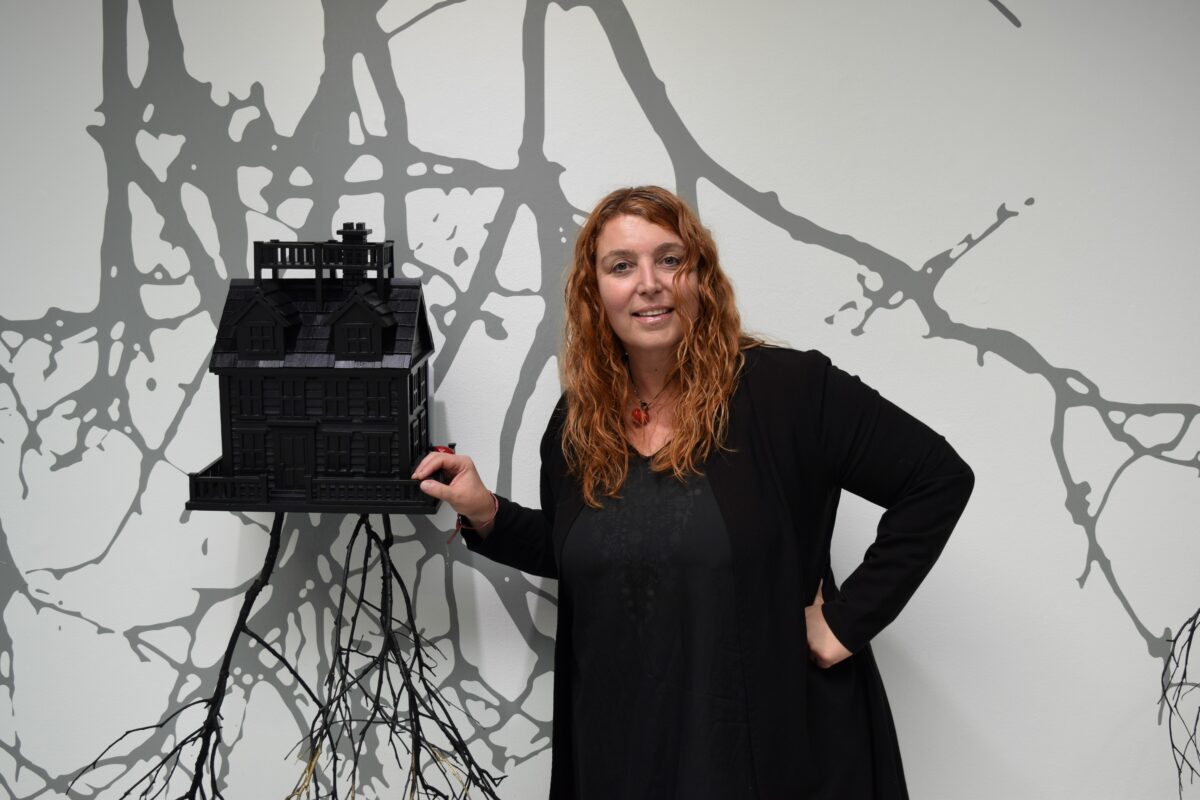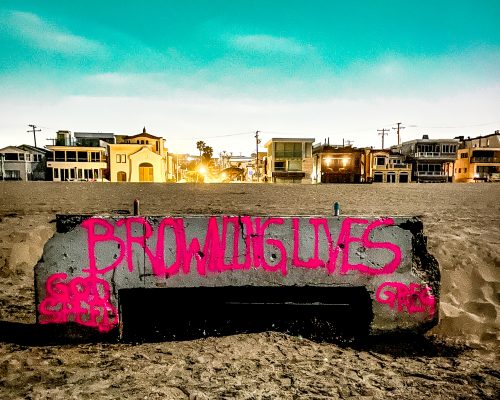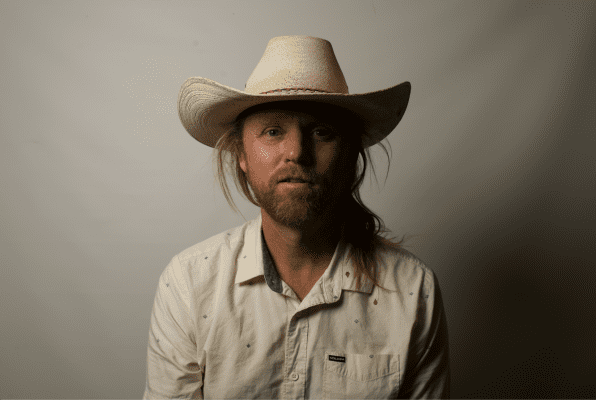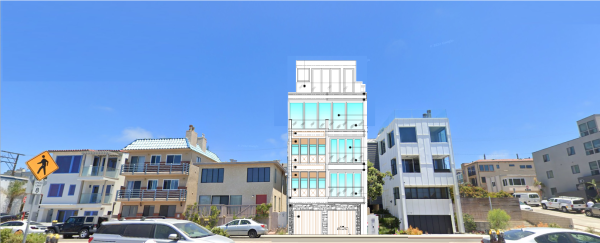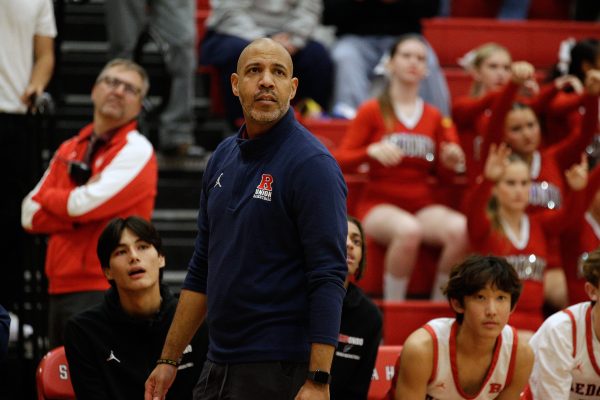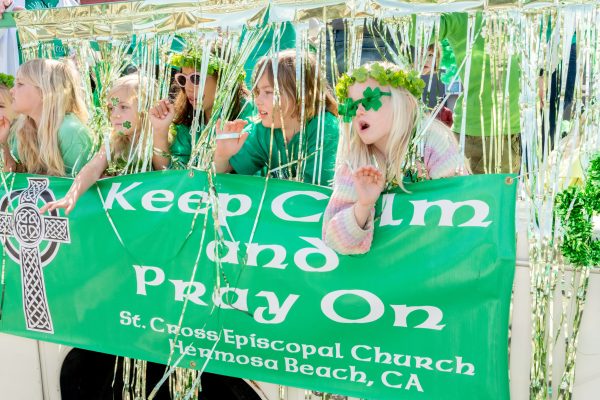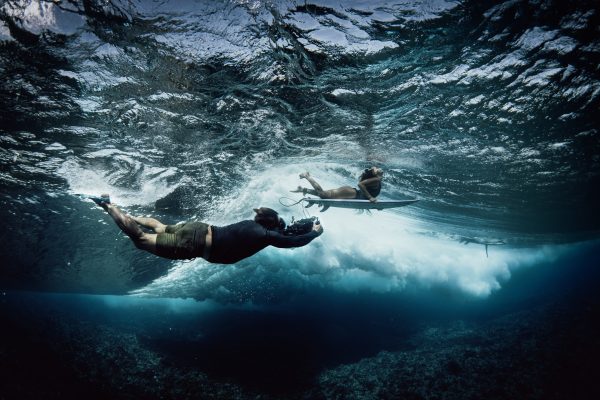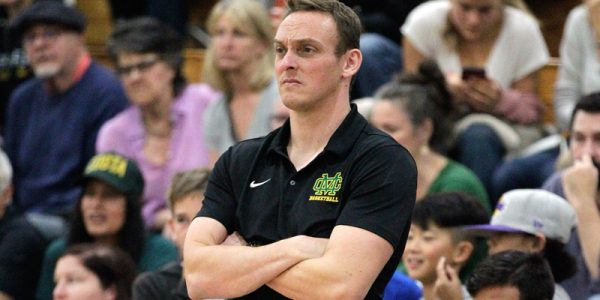Going global with Marisa Caichiolo
by Bondo Wyszpolski
Marisa Caichiolo is an artist-curator from Argentina whose work is all over the map — not just figuratively, but literally. She’s exhibited or arranged shows in Spain, Brazil, Ecuador, Italy, China, Qatar, Morocco, and the United Arab Emirates, and of course all across the U.S. But you don’t need an airline ticket to see her latest endeavor, “Back to the Roots,” on view through Dec. 29 at the Manhattan Beach Art Center. The show was curated by Eric Brinkman as envisioned and presented by Homeira Goldstein of Time4Art.
“Back to the Roots” offers a sampling from different bodies of work that, Caichiolo says, “weaves together the threads of my European ancestors and my South American roots.” The opening reception was well attended, although it did fall short of the 31,000 visitors who turned out for her recent exhibition at the MUSA Museum in Mexico.
Marisa earned a Ph.D. in art history and another in psychology from the University of Buenos Aires. Early on, she traveled back and forth between Argentina to New York, but eventually found work in animation in Los Angeles and moved here in 1999. Although she identifies herself as a nomad and an immigrant, others might see her more as a global resident because she seems to be at home everywhere.
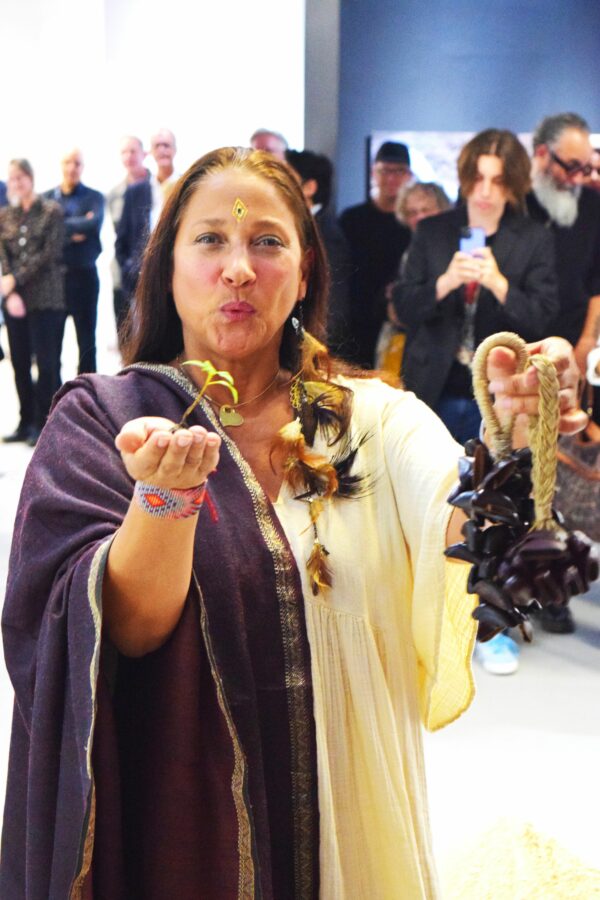
Art was in the cards
“I’m very passionate about what I do,” Marisa says, during a conversation at the Manhattan Beach Art Center, two days before the installation was finalized. “When I was six years old, if you’d asked me, What do you want to do? ‘Oh, I want to paint!’ When I was 16, the same thing.” She then expresses her gratitude to the Universe “because at least in this lifetime I found my mission, I found my passion, and it makes me happy every day.”
Now, at age 50, she retains the same outlook she did when she was six. “It’s not about fame and money; no, it’s something deeper than that.” What she’s referring to is the connection she feels with her inner self when she’s making art.
Marisa is a conceptual artist who is at ease in several disciplines.
“I work with performers, dancers, artists — it depends on the project,” she said.
During her opening reception in Manhattan Beach, as part of her “Sacred Seed” installation, Luchi Estevez (a sound performer from the Dominican Republic) presented a ceremonial homage to Nature by way of birth and rebirth: the seed as life potential. Estevez placed a germinated seed atop a mound of soil on the floor of the gallery, a gesture or offering meant to engage the community.
The idea for this presentation stems from the darkest days of the COVID pandemic, which Marisa saw as a wakeup call for all of us to reconnect with Mother Earth.
“Nothing fulfills me more,” she says, “than to go barefoot on the ground, to walk on the grass. Even if I have a headache, I go outside, I walk a few minutes, and the headache will be gone. Or just hug a tree, and that energy will rebound to you.”
Marisa met Time4Art founder Homeira Goldstein at least as far back as 2020, and on a couple of occasions, both locally and abroad, they connected over or collaborated with one another. This led to Homeira’s decision to bring Marisa and her work to the attention of local residents who may not be familiar with her, though Marisa has been involved with shows at the Torrance Art Museum and the Palos Verdes Art Center.
I described Marisa as an artist-curator, but it should be noted that these two hats are never worn at the same time. “I divided myself,” she points out. “One side is the artist and the other side is the curator. I never, ever curate an exhibition and put in my work, for ethical matters, and also because it’s hard to focus on somebody else’s work when you are worried about your own involvement in the exhibition exhibition, When I’m an artist I usually work with other institutions and other curators. When I’m a curator I focus on the artists.”
Total immersion
It may not be clear from “Back to the Roots” because it has a little bit of this and a little bit of that, but Marisa invests a great deal of time researching and preparing her projects.
“When I’m involved with one subject I like to study it for several years and work in that series until I consider it is over, and that I need to jump to the next one.”
Although some artists like nothing better than to retreat to their inner sanctum, away from the phone and the interference of friends or family, Marisa seems to be just the opposite.
“I firmly believe that the creation process should not be carried out from a closed-up studio,” she has written. “Instead, we should establish connections with what happens in around the globe, fostering interaction and growth, which can only flourish from contact with other people and cultures.”
Unsurprisingly, Marisa is a very social person, easy to talk to, and someone who immediately puts us at ease.
Now, what about her projects, those on view and those we can only read about?
One of them, “How Else Can I Serve You?” combines banquet silverware with embroidered strands of the artist’s red hair. One element is a hard metal and the other is thin and fragile. Marisa notes, “My idea here is to raise my voice against the unjust wages, unfair gender working conditions, generating questions related to borders, illegality, diversity,” as well as ever-topical issues such as abuse and violence.
A related project is titled “No More Blood in Your Clothes.” Marisa says it was conceived as “a project against the exploitation of garment workers in the textile industry.”
While neither of the above two series are represented in the current show, they do underline what Marisa had told me earlier in our conversation: “I have to say that my work has that quality of being very social and political.”
You may want to keep that in mind when you study the wall with toy-sized houses, charred black in color, with painted roots snaking downwards from them. Marisa currently lives in Ojai. This series, “Houses,” was inspired in part by one of the devastating fires that scorched that part of Southern California a few years back — indeed, as it has recently as well. What is implied by way of this installation is loss, preservation, and recovery, along with the home and family roots that ground us.
Clothed and enclosed
I’m sure that Marisa is fond of all of her projects, but the one that she seems to return to has to do with skin. I’ll let her explain: “The skin is the layer that really separates the inner world from the outer world, and that is related to the immigration history in my family because I think that when you change a continent, when you change a country, you change your skin; you kind of put on a different suit, and you change.”
Or, as Marisa wrote elsewhere: “Skin as a metaphor, a shield, as a mediating element and a support for a nomadic identity, always changing, always expectant, exposed to interacting with others and the construction of my feminine and feminist self.”
Although Marisa doesn’t pursue this line of thinking with me, I wonder about the extent many of us go to in order to beautify our skin so that it retains a glow and radiance as we age, and as it develops spots and discoloration and wrinkles. She doesn’t mention tattoos or piercings, nor do we discuss the sexual connotation of skin, when revealed and shared, although presumably this is part of the larger picture.
But of course there’s another kind of skin, which is what we enclose ourselves in, and this brings us to the full-length dresses that hang in the main gallery, dresses that resemble Greek columns. This is, Marisa says, “one of the many projects related to skin. I always work with dresses, very long dresses. The dress is the cocoon that we use to separate ourselves and also to present ourselves to the world.”
These dresses, however, could only belong to angelic beings that float in the air or trail after them in water, and thus should be interpreted with caution. “The dresses are not dresses,” Marisa says. “I’m not a fashion designer; it’s about the skin.”
But wearable clothing, if we can come back to that, is also a metaphor, a shield, and a mediating element, which can conceal our emptiness or loneliness. Conversely, when we are confident or at least trying to project confidence, we adorn ourselves in skin, that is, in apparel that is more colorful or lavish.
Even so, there are times when this “skin” can be a distraction (like wearing red at a funeral). “In the art world,” Marisa says, “I always wear black. People ask me, ‘Why do you always wear black? Why don’t you have flowers?’ And I say, Because I never want to compete with the artwork. There are certain colors and certain things that make you blend in or (appear) invisible, and if I wore a big Hawaiian dress in front of a painting I would really disturb it or I would take the energy away from the work.”
The notion of “skin” has inspired other projects as well.
“Thirty years ago,” Marisa says, “I did a body of work about frogs, the skin of frogs, because some of the most beautiful frogs wear poison on their skin, and I did a whole parallel story with humans. I called about 15 models (young women), and I asked them, ‘Can you pose naked? I want to paint you as a frog.’ So I painted every girl as a different poisonous frog from a different country.”
Among her many other achievements, Marisa is the director and founder of the Santa Monica-based non-profit Building Bridges Art Exchange (BBAX), which furthers cultural understanding through the arts. We spoke before the recent Presidential election, but I trust she’s as optimistic as before about the role of arts in connecting people at every layer and level, no matter where they are. “I think with the arts we can really change something for the better,” she says. “We can make little changes; we can call to action.” And, important in these times, “We can envision and generate a better world.”
Marisa Caichiolo: Back to the Roots is on view through Dec. 29 at the Manhattan Beach Art Center, 1560 Manhattan Beach Blvd, Manhattan Beach. Hours, Wednesday and Thursday, 10 a.m. to 9 p.m.; Friday, Saturday, and Sunday, 10 a.m. to 5 p.m. Information, (310) 802-5440. ER

